Every utility system construction project—whether it’s laying water mains, installing power lines, or upgrading communications—carries substantial risk. The dangers are real: struck-by incidents, electrocutions, trench collapses, and heat stress are persistent hazards that send workers home injured or worse.
The good news is that a majority of these incidents are avoidable. The industry’s most common—and most severe—injuries often stem from lapses that are both visible and addressable with the right mix of practical safety protocols and modern technology. When video AI platforms like Spot AI are added to the safety toolbox, they help you identify and address vulnerabilities before they lead to incidents.
In this guide, we’ll break down the top 4 injuries that put utility system construction workers in harm's way, why they happen, how to reduce their likelihood, and where video AI can help create a safer site.
The Cost of Safety Negligence in Utility System Construction
Utility system construction is high-stakes. When safety slips, the financial penalties can be steep. Major safety violations can lead to major fines from regulatory bodies like OSHA. These are just the direct consequences—before factoring in lost productivity, retraining, or the human impact.
These incidents—and the penalties that follow—are not inevitable. Forward-looking, visible safety practices, supported by technologies like video AI, can help reduce their likelihood. The goal is to protect people and keep every project on track, not just to avoid fines.
The Top 4 Addressable Injuries in Utility System Construction
1. Struck-By Incidents (Vehicles, Equipment, or Objects)
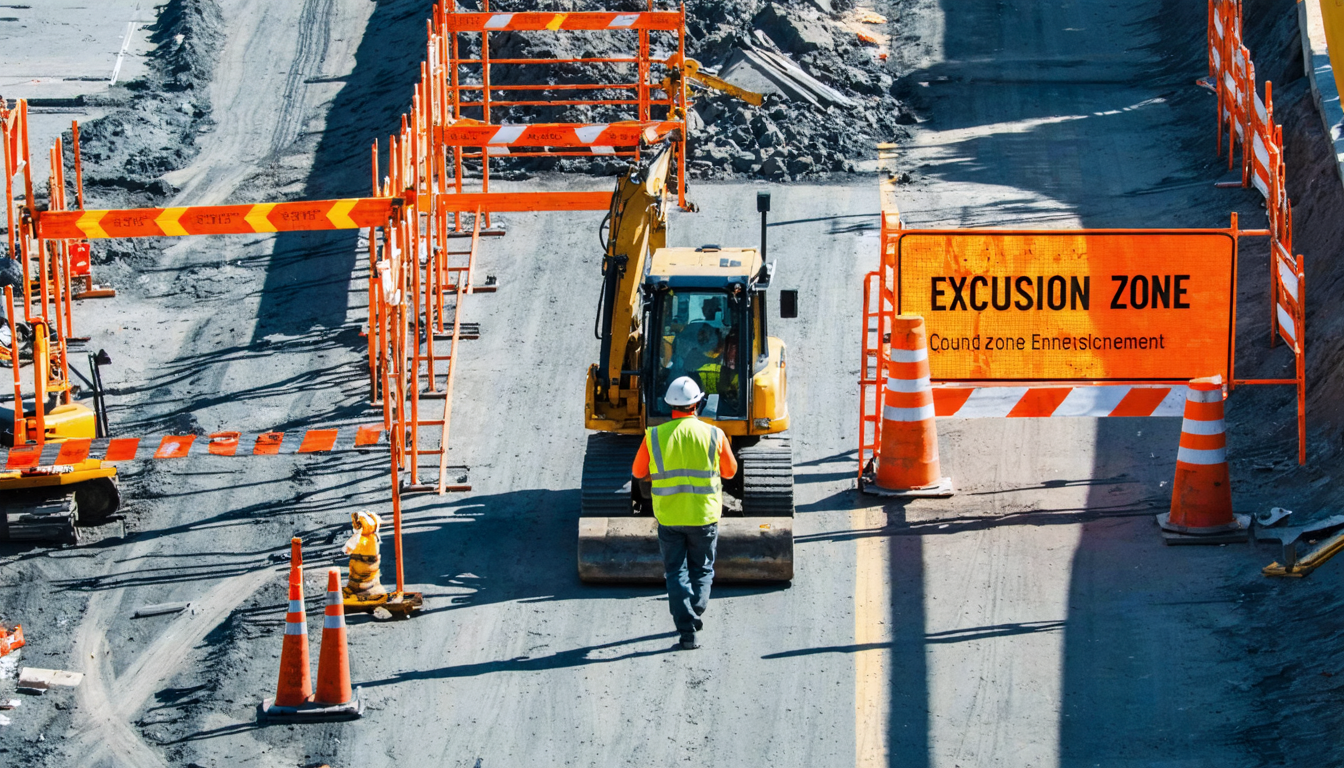
Scenario: A backhoe swings a load of pipe overhead. A worker steps into the exclusion zone, unseen by the operator. In a moment, he’s struck.
Root Causes & Impact: Struck-by incidents are a top driver of severe injuries and fatalities, especially those involving heavy equipment, cranes, and moving vehicles. Poor visibility, a lack of clear barriers, and failure to use spotters or signal systems are frequent contributing factors.
How video intelligence helps: AI-powered cameras define and enforce exclusion zones, detect unauthorized entries, and issue real-time alerts—helping crews intervene quickly.
2. Electrocutions
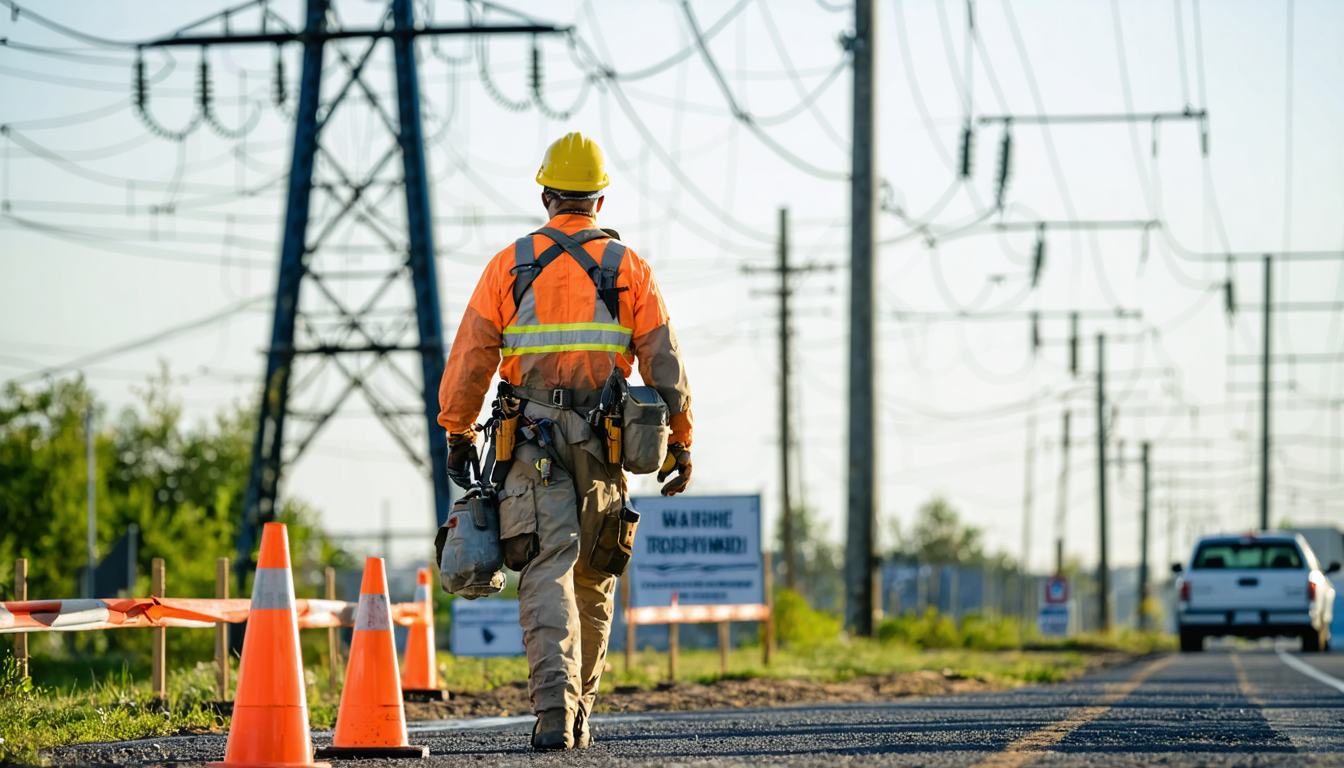
Scenario: A field tech is positioning a steel support truss. The truss touches an overhead power line. There’s an arc flash, resulting in a severe injury.
Root Causes & Impact: Electrocutions are a persistent cause of construction deaths and often result in severe, life-altering injuries like burns or amputations. Missed lockout/tagout procedures, incomplete utility locating, and unsafe distances from live wires are common causes.
How video intelligence helps: Video analytics can monitor for work near energized lines, flag missing PPE (like hard hats or vests), and provide swift playback after incidents for root cause analysis and targeted retraining.
3. Caught-In/Between (Trench Collapses, Machinery)
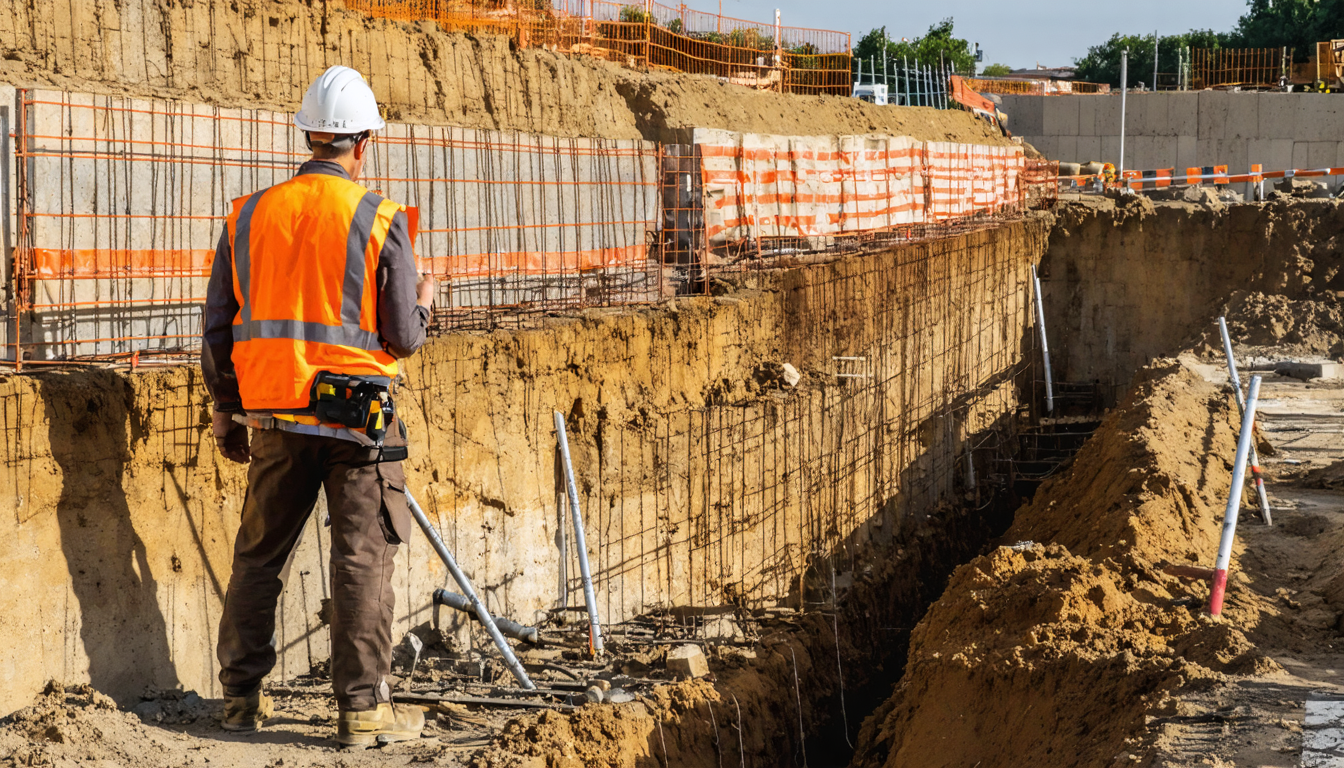
Scenario: A worker climbs into a 10-foot trench to retrieve a dropped tool. The walls aren’t shored. Seconds later, the trench collapses.
Root Causes & Impact: Caught-in/between injuries—especially trench collapses—are a major cause of severe injuries and fatalities, despite decades of OSHA enforcement. Unstable soil, a lack of trench boxes, and unsafe behaviors like entering unprotected trenches are common culprits.
p>How video intelligence helps: AI cameras can enforce entry protocols by alerting when workers access hazardous areas—like an unprotected trench—without proper safeguards.4. Heat Stress
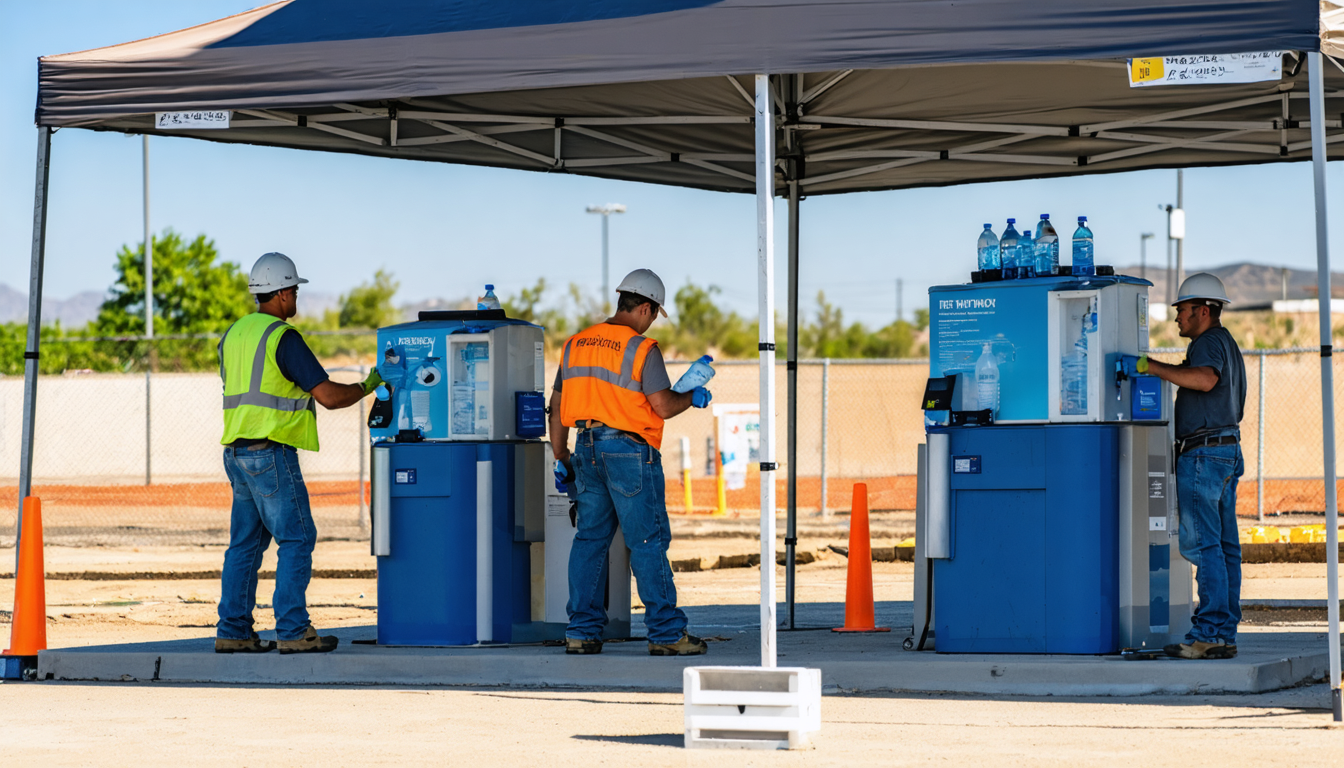
Scenario: It’s 37°C on site. A worker skips his hydration break to stay on schedule. Mid-afternoon, he collapses from heat stroke.
Root Causes & Impact: Heat stress is an invisible but serious threat on utility construction sites. High temperatures can reduce productivity and lead to heat-related illnesses or fatalities. Skipped breaks and a lack of shaded rest areas are common issues that increase the likelihood of illness.
How video intelligence helps: Video AI can help monitor work/rest cycles by verifying that cooling stations are being used and flagging if workers remain in high-risk areas for extended periods, protecting crews when the temperature soars.
Hurdles and Impact of Injuries
Injury Type |
Key Hurdles |
Impact |
Role of data & technology |
|---|---|---|---|
Struck-by |
Poor visibility, ignored exclusion zones, moving vehicles |
Trauma, amputations, fatalities, insurance hikes |
Video AI creates and enforces exclusion zones and issues real-time alerts for breaches |
Electrocutions |
Unmarked lines, missed lockout/tagout, missed PPE |
Burns, deaths, lost time, regulatory penalties |
Video AI flags unsafe work near live wires, identifies missing PPE, and enables event review |
Caught-in/Between |
Unsafe trenches, lack of shoring, unauthorized entry |
Crush/asphyxiation injuries, fatalities |
Video AI monitors trench entry, flags unauthorized access, and helps verify safety protocols |
Heat Stress |
Skipped breaks, unmonitored exposure, no cooling areas |
Heat illness, lost productivity, increased incidents |
Video AI monitors rest cycles and the use of designated cooling stations |
How Technology Strengthens Injury Risk Reduction
Struck-By Incidents
Safety obstacle: Exclusion zones around heavy equipment are hard to enforce, especially when sites are busy or visibility is poor.
Tech Solution: Video analytics define digital boundaries. If a worker or vehicle enters a danger zone, the system issues a real-time alert.
Electrocutions
Safety roadblock: Workers sometimes bypass lockout/tagout or work too close to energized lines, often due to unclear marking or rushed schedules.
Tech Solution: Spot AI can monitor for presence near live electrical hazards, flag missing PPE, and verify that lockout/tagout protocols are followed. When incidents occur, video evidence helps retrain and reduce the likelihood of repeat events.
Caught-In/Between
Safety sticking point: Trench safety protocols are often violated when crews are under pressure, or when a “quick check” leads to a serious incident.
Tech Solution: AI video monitors trench entry points to ensure only authorized and properly equipped workers enter. Real-time alerts can flag when trenches are accessed without proper protection.
Heat Stress
Safety barrier: Heat illness is often not identified until symptoms are severe—especially when workers skip breaks to meet deadlines.
Tech Solution: Video analytics can help teams monitor heat safety protocols by tracking scheduled breaks and verifying that designated cooling and hydration stations are being used. This provides a forward-looking way to encourage compliance with heat safety plans.
Practical Implementation of Safety Technology
Integrating video AI into utility system construction is about making your safety program smarter and more responsive, not replacing people.
Here’s how to get started:
-
Build on what works: Video AI should layer onto existing safety protocols, offering continuous monitoring of key areas.
-
Integrate with current systems: Most solutions (like Spot AI) can leverage your existing camera infrastructure, minimizing disruption and cost.
-
Customize alerts: Set up real-time notifications for your top risks—exclusion zone breaches, missing PPE—so supervisors get actionable information, not just more footage.
-
Review and improve: Leverage video AI to review incidents, identify root causes, and tailor retraining where it matters.
-
Train your team: Make sure everyone understands how video supports—not replaces—their safety role.
When evaluating options, look for platforms that are easy to deploy, offer flexible alerting, and provide simple video search tools. And above all, choose tools that empower your frontline teams to act fast and decisively.
Strengthen safety and protect project outcomes
Utility system construction can be made safer—and smarter—when people and technology work together. Anticipatory safety measures, supported by video AI, help you identify and address dangers before they escalate. This leads to fewer injuries, smoother operations, and a stronger reputation for safety leadership.
See how Spot AI’s video AI platform can help you strengthen safety and reduce risk on your next project. Request a demo to experience the technology in action.
Frequently asked questions
What are the main safety risks in utility system construction?
Utility construction sites are dynamic and hazardous. The biggest hurdles are enforcing exclusion zones, verifying consistent PPE use (especially for electrical work), mitigating trench collapses, and monitoring for heat stress in changing weather conditions. Fast-moving crews, complex environments, and deadline pressures make these hazards hard to control without real-time monitoring.
How does video AI help reduce the risk of injuries on utility construction sites?
Video AI platforms can monitor high-risk areas 24/7, detect unsafe behaviors (like missing harnesses or exclusion zone breaches), and alert supervisors in real time. This allows for timely intervention to mitigate a developing risk. Video also offers context for incident investigations and safety training.
How can video AI be integrated with our current safety program?
Most video AI solutions can leverage your existing camera infrastructure. Integration involves connecting cameras to the analytics platform, defining alert rules for your key areas of concern, and training your team to respond to alerts and utilize video for incident review. The goal is to make technology a seamless extension of your safety protocols.
Are there best practices for using video AI on utility projects?
Yes: Focus on your greatest hazards (struck-by, electrical, trenches, heat). Customize alerts so they are specific and useful, not overwhelming. Conduct video reviews for targeted retraining after incidents. And involve workers in the process—make it clear that technology is there to keep everyone safe.
What to look for when choosing a video AI platform for safety?
Look for easy deployment, compatibility with your current cameras, customizable alerts, user-friendly video search, and strong support. The best platforms empower your team with timely, specific information—not just more video to sift through.
About the author
Joshua Foster is an IT Systems Engineer at Spot AI, where he focuses on designing and securing scalable enterprise networks, managing cloud-integrated infrastructure, and automating system workflows to enhance operational efficiency. He is passionate about cross-functional collaboration and takes pride in delivering robust technical solutions that empower both the Spot AI team and its customers.















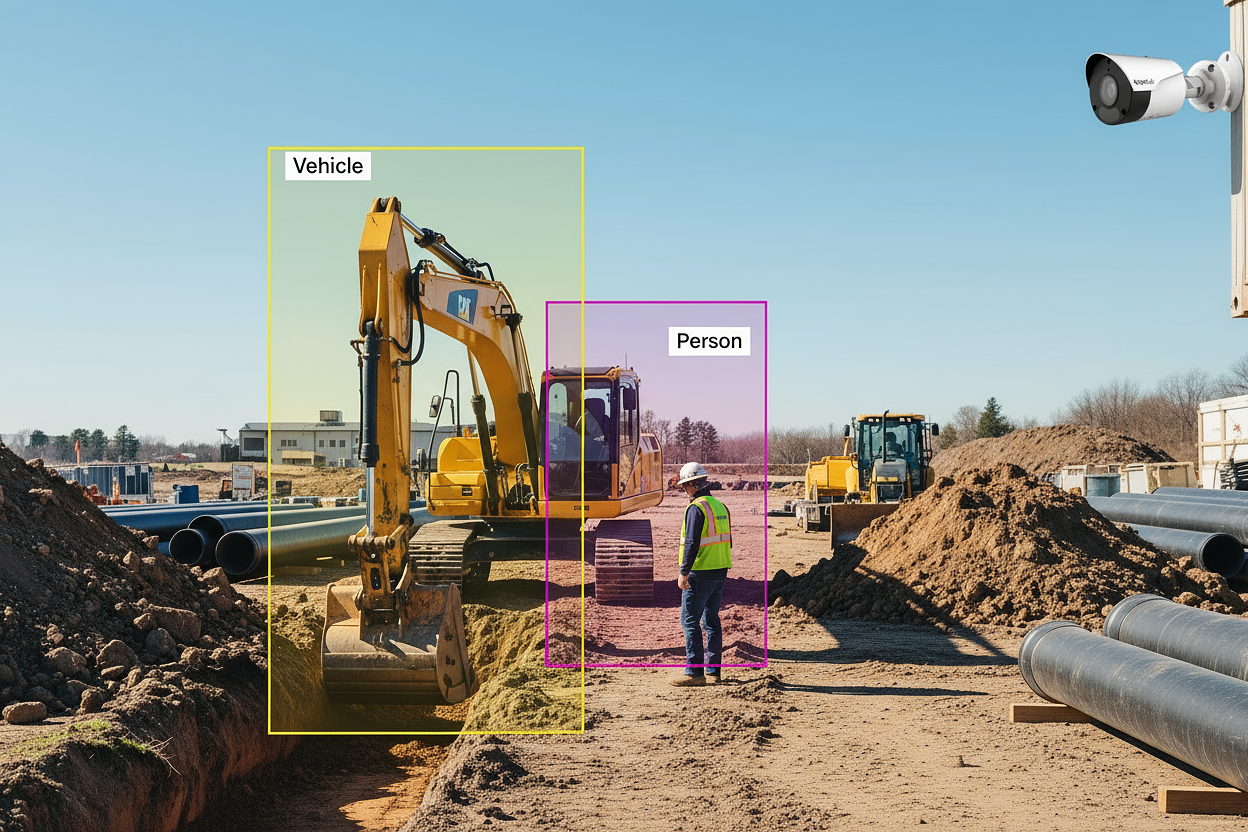









.png)
.png)
.png)